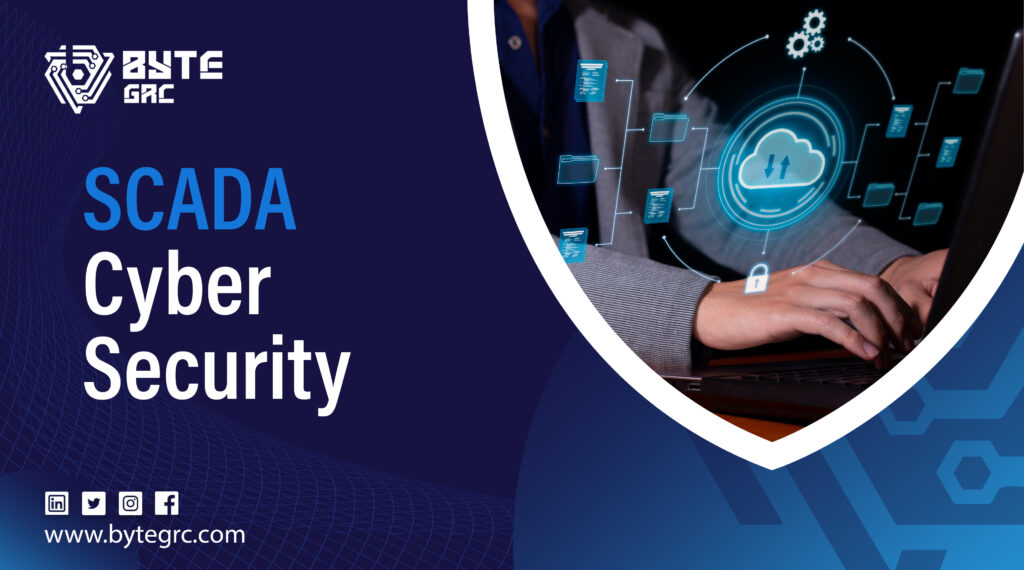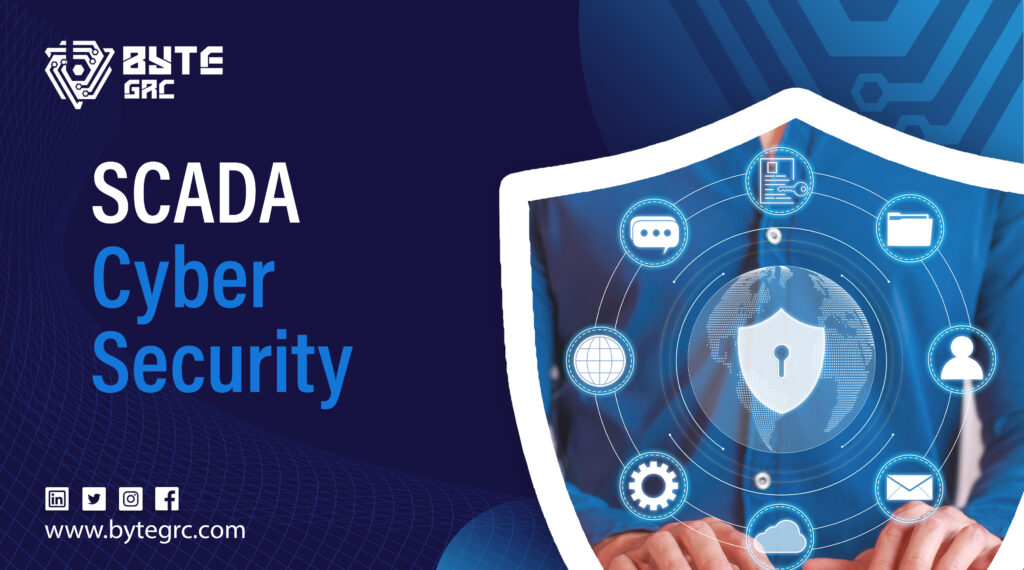
Table of Contents
Top 10 SCADA Cyber Security Best Practices You Need Now
In 2021, the Colonial Pipeline—a major U.S. fuel pipeline—was hit by a cyberattack that caused fuel shortages and panic buying across several states. This wasn’t just a tech issue—it was a wake-up call for the entire world about the real risks in industrial systems.
If you’re wondering how something like this can happen, the answer lies in a system called SCADA.
This blog will walk you through the top 10 SCADA cyber security best practices that you can start using today to protect your systems and your people.
What is SCADA?
SCADA stands for Supervisory Control and Data Acquisition. These systems control things like power grids, water treatment plants, gas pipelines, and factories. In short, SCADA runs the behind-the-scenes machinery of our modern lives.
From managing a water supply network to controlling oil production, SCADA systems help keep critical infrastructure running smoothly. But they also create a wide attack surface for hackers.
Why is SCADA Cyber Security Critical?
Because SCADA is tied directly to critical infrastructure, any cyberattack on it can result in downtime, safety risks, or even national emergencies. As technology continues to advance, these systems are becoming more connected to the Internet, making them attractive targets for threat actors who specialize in cybercrime and espionage techniques.
Rise in Cyberattacks on Industrial Systems
In the Information Age, digital threats are no longer limited to just computers or smartphones. The Industrial Control System (ICS) environment is now a favorite target. In fact, according to the U.S. Cybersecurity and Infrastructure Security Agency (CISA), attacks on ICS networks have surged by over 200% in the last five years.
Common Attack Methods
Hackers use a wide range of techniques, including:
- Phishing & Social Engineering – Trick staff into revealing passwords or installing malware.
- Ransomware – Lock systems and demand money to restore them.
- Unpatched Vulnerabilities – Exploit outdated software and legacy systems.
- Insider Threats – Employees with access may misuse or leak data.
- Supply Chain Compromise – Target third-party software or hardware suppliers.
Consequences of a Breach
The impact of a SCADA cyber security breach can be devastating:
- Operational Downtime – Production grinds to a halt.
- Financial Losses – Downtime, recovery, and fines can cost millions.
- Safety Hazards – Malfunctioning machines could cause injuries or worse.
- Regulatory Penalties – Failing to follow compliance guidelines like NERC CIP can lead to legal trouble.
Top 10 SCADA Cyber Security Best Practices
Here are top ten SCADA cyber security best practices you need to know:
#1: Conduct Regular Risk Assessments & Audits
Start by checking where you’re vulnerable. Risk assessments help identify weak spots in your infrastructure. Follow standards like NIST Cybersecurity Framework or IEC 62443 for guidance.
- Use penetration tests to simulate real attacks.
- Set up red team vs. blue team exercises.
- Perform annual security audits to keep systems sharp.
Regular assessments reduce your attack surface and prepare your team for real-world threats.
#2: Implement Network Segmentation & Air-Gapping
Divide your network into smaller parts to contain threats. This is called network segmentation.
- Separate your IT (office) and OT (factory) environments.
- Use firewalls, VLANs, and DMZs to control traffic.
- In high-risk cases, air-gap the SCADA system—meaning it’s completely offline and not connected to the Internet.
While air-gapping increases security, it can make maintenance tricky. So, use it only when truly necessary.
#3: Enforce Strong Access Controls & Authentication
Not everyone should have full access.
- Use Role-Based Access Control (RBAC) to give users only what they need.
- Enable Multi-Factor Authentication (MFA).
- Manage privileged accounts with Privileged Access Management (PAM) tools.
This keeps unauthorized users out—even if they manage to steal a password.
#4: Keep Systems Updated & Patch Management
Outdated software is like an open door for attackers.
- Apply security patches regularly, even in legacy systems.
- Test patches in a safe environment before rolling them out.
- Use virtual patching when full updates aren’t possible.
Stay ahead of software vulnerabilities by working closely with vendors and staying updated on known exploits.
#5: Monitor & Detect Anomalies with ICS-Specific SIEM
To stop threats, you need to see them coming.
- Use Security Information and Event Management (SIEM) tools tailored for SCADA systems.
- Deploy Intrusion Detection Systems (IDS) in your network.
- Use machine learning to spot strange patterns and anomaly detection systems to catch new attack methods.
Real-time alerts give your team the time they need to respond quickly.

#6: Secure Remote Access with VPNs & Zero Trust
Remote access is convenient but risky.
- Use Virtual Private Networks (VPNs) with strong encryption.
- Never allow direct access—use jump boxes and session logs.
- Adopt Zero Trust Architecture (ZTA)—always verify, never trust.
Secure communication matters, especially when working across telecommunications or cloud computing platforms.
#7: Encrypt Data in Transit & at Rest
Data needs to be locked up—whether it’s moving or not.
- Use TLS or IPsec for network encryption.
- Store sensitive data securely with full-disk encryption.
- Manage your encryption keys carefully using key vaults and access control.
Encryption is a strong defense against cyberwarfare and information leaks.
#8: Train Employees on ICS Security Awareness
Your team is your first defense.
- Run phishing simulations regularly.
- Train staff to recognize suspicious emails and fake logins.
- Offer short and simple training sessions for engineers and operators.
A well-informed staff reduces the chances of cybercrime caused by human error.
#9: Develop & Test an Incident Response Plan
If an attack happens, you need a game plan.
- Create a SCADA-specific incident response plan.
- Define who does what during a breach.
- Run tabletop exercises and drills to practice.
Preparation helps you recover faster and reduces downtime, data loss, and legal risks.
#10: Work with Trusted Vendors & Secure the Supply Chain
Your system is only as strong as its weakest link.
- Vet all vendors for cybersecurity compliance.
- Require security certifications in contracts.
- Monitor third-party software and tools.
Supply chain threats are a growing issue in cyberspace. Make sure every part of your ecosystem is safe.
Additional SCADA Security Considerations
Besides digital defenses, consider these too:
- Physical Security: Keep control rooms locked and access-controlled.
- Backups & Disaster Recovery: Use offline backups and test recovery steps often.
- Follow Industry Standards: Stay compliant with NERC CIP, ISA/IEC 62443, and other best practices.
Don’t forget to regularly review your entire information security audit plan.
Conclusion
SCADA systems are essential to how we live, but they’re also a top target in today’s digital world. From energy grids to water supply networks, protecting these systems must be a top priority.
We’ve covered the top 10 SCADA cyber security best practices you can start using today—from risk assessments to encryption to employee training. These aren’t just tech steps—they’re vital for safety, business continuity, and national security.
If you’re serious about keeping your critical infrastructure safe, consider partnering with experts like Byte GRC to manage your risks and stay ahead of emerging threats.
FAQs
1: What is SCADA and why is it important in cyber security?
SCADA stands for Supervisory Control and Data Acquisition. It controls critical systems like electricity, gas, and water. Because it’s connected to the real world, any breach can cause serious harm—not just to systems, but to people.
2: What are common SCADA cyber threats?
Threats include ransomware, phishing, malware, and legacy system vulnerabilities. Attackers might exploit weak authentication, unpatched software, or third-party suppliers.
3: How often should risk assessments be done for SCADA systems?
At least once a year—or more if you’ve added new tools or seen suspicious activity. Include penetration testing, audit trails, and follow NIST or IEC 62443 frameworks.
4: How does SCADA security differ from regular computer security?
Unlike standard computer security, SCADA systems involve both digital and physical components. A failure here can shut down a factory or impact an entire city.
5: Can legacy systems still be protected?
Yes, but it’s tricky. Use virtual patching, limit network exposure, and add firewalls or air-gaps to isolate them.
